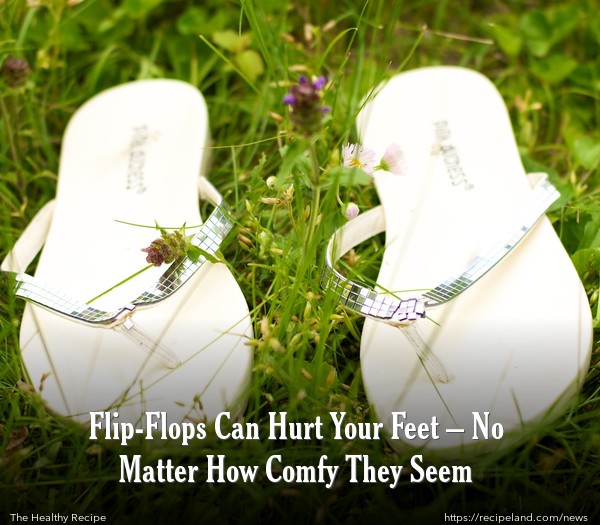For most people, summertime wouldn’t be complete without wearing a pair of flip-flops to the pool, beach or lake. Making sure you choose the right pair and know when it’s time to trade them out for closed toed shoes will help protect your feet and keep you safe all summer long.
Foot pain can result from flip-flops that do not provide enough arch support. The motion of walking in flip-flops can cause plantar fasciitis, shin splints, and tendonitis because they don’t provide enough support or cushioning. You are also more likely to sprain an ankle if you trip.
You don’t want to wear flip-flops for long periods of time spent walking, but they are fine to wear in moderation. Just be sure to buy the best pair using the following guidelines.
Arch Support. Unless you have flat feet with absolutely no arch, you will want to find a comfy pair of flip-flops that provides proper arch support. Look for a pair that has a visible indentation that nestles your heel, with the toe end pointing slightly up. This allows a better grip for your toes and will help protect your feet from pain and tendon injury.
Cushioning. You want your flip-flops to be sturdy enough that they will give a little to cushion your steps, without being flimsy. If the sole is thin enough to bend in half, keep looking – this will not reduce the shock impact of your foot steps on your shins. If they are too flimsy, they may also not protect your feet if you accidentally step on glass or other sharp objects.
Traction. Flip-flops with a slick tread are not only bad for you feet, but can be dangerous around wet areas. Find a pair that has deep enough ridges in the tread to provide traction.
Material. Leather straps are less likely than plastic to cause blisters or irritation between your toes. This is a personal preference, but opt for comfort over style.
Fit. No matter how cute a pair of flip-flops may be, make sure that they fit properly. You want your entire foot – toes to heel – on the sole. If your heel, toes or instep hang over the edge, try another pair. Walk around the store to make sure they fit well and don’t “flop” too much.
Less foot protection from flip-flops and sandals can also cause more common injuries to the toes or feet such as stepping on glass, stubbing toes or breaking toe nails. Yard work, sports, hiking should all be done with closed toed shoes to avoid injury.
A final word of advice: NEVER WEAR FLIP-FLOPS WHEN DRIVING.
Flip-flops, or any other loose fitting shoe, can potentially slip off or get caught on (or under) the gas pedal or brake.










Comments